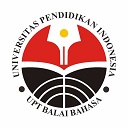Japanese Learner Anxiety: Case Study of Language Anxiety in an Indonesian-Japanese Intercultural Discussion Forum
Abstract
Keywords
Full Text:
PDFReferences
Clara, D. (2022). Perbandingan Budaya Organisasi Pada Unit Kegiatan Mahasiswa/Bukatsu di Universitas Darma Persada dan Universitas Hiroshima [Comparison of Organizational Culture in Student Activity Units/Bukatsu at Darma Persada University and Hiroshima University]. Jakarta: Universitas Darma Persada.
Daulay, S. (2020). Faktor-faktor yang mempengaruhi penguasaan bahasa kedua bagi penutur asing mahasiswa asal Thailand di UMSU [Factors influencing second language acquisition for non-native speakers of Thai students at UMSU]. Medan: Universitas Muhammadiyah Sumatera Utara.
Fadhilah, I. (2022). Faktor Kecemasan Siswa Dalam Berbicara Bahasa Inggris pada Mahasiswa Universitas Muhammadiyah Jakarta [Student Anxiety Factors in Speaking English at Muhammadiyah University of Jakarta Students]. Indonesian Research Journal on Education, 1 - 440.
Fitriah, & Muna, H. (2019). Foreign language speaking anxiety: A case study at English Departement Student of IAIN Lhokseumawe and Al Muslim University. Jurnal Ilmiah DIDAKTIKA, 19, 140-158.
Gusnovita, I., Wahyuni, D., & Putri, M. (2018). Kecemasan berbicara pada mahasiswa semester V program studi pendidikan bahasa Jepang di Universitas Negeri Padang [Speaking anxiety in fifth semester students of Japanese language education study program at Padang State University]. Omiyage.
Hoftman., & Hamidah. (2022). Tingkat Kompetensi Komunikasi Bahasa Jepang (Penelitian Tindakan Kelas Mahasiswa Semester Vii Bahasa Jepang Stba Jia Bekasi 2019/2020) [Japanese Language Communication Competence Level (Classroom Action Research of Semester VII Japanese Language Students of Stba Jia Bekasi 2019/2020)]. Indonesia: STBA JIA.
Horwitz, Elaine, Tallon, M., & Luo, H. (2010). Foreign Language Anxiety. Anxiety in schools: the causes, consequences, and solutions for academic anxiety, 96-118.
JPF. (2021). Survey on Japanese-Language Education Abroad. Tokyo: The Japan Foundation.
JPF. (2022). JF Standard for Japanese Language Education. Tokyo: The Japan Foundation.
Machida, T. (2010). Foreign Language Anxiety among Intermediate-level University Students of Japanese. Proceedings of the 22nd Annual Conference of the Central Association of Teachers of Japanese, 62-75.
MacIntyre, P. D., Noels, K. A., & Clément, R. (1997). Biases in Self-Ratings of Second Language Proficiency: The Role of Language Anxiety. Language Learning, 265-287.
Muliadi. (2020). Kecemasan Bahasa dalam pembelajaan Tata Bahasa Jepang Secara Daring: Studi pada Pembelajar Bahasa Jepang Tingkat Dasar [Language Anxiety in Online Japanese Grammar Learning: A Study on Elementary Japanese Language Learners]. Bandung: Universitas Pendidikan Indonesia.
Ortega, L. (2013). Understanding Second Language Acquisition. New York: Routledge.
Palupi, R. B. (2022). Analisis faktor kecemasan pada proses keterampilan berbicara peserta didik tingkat i pada mata kuliah Bahasa Inggris [Analysis of anxiety factors in the speaking skills process of first-grade students in English courses]. Jurnal Dimensi Pendidikan dan Pembelajaran, 10(2).
Priyo, T. (2018). Dampak dan startegi untuk mengatasi kecemasan berbicara dalam pembelajaran bahasa inggris sebagai bahasa kedua (ESL) dan asing (EFL) [Impact and strategies for overcoming speaking anxiety in learning English as a Second Language (ESL) and Foreign Language (EFL)]. Jurnal Lingua Aplicata, 2(2).
Setiawan, H., Artadi, A., & Nurdiniyah, H. (2021). The Effect of Online Cultural Exchange Activities on Students’ Motivation in Japanese Language and Culture Learning ( A Case Study of Darma Persada University Student). Vietnam: JASE.
Toyama, M., & Yamazaki, Y. (2018). Exploring the components of the foreign language classroom anxiety scale in the context of Japanese undergraduates. Asian-pasific Journal of Second and Foreign Language Education. Retrieved from https://sfleducation.springeropen.com/articles/10.1186/s40862-018-0045-3.
DOI: https://doi.org/10.17509/japanedu.v9i2.66592
Refbacks
- There are currently no refbacks.
Copyright (c) 2025 JAPANEDU: Jurnal Pendidikan dan Pengajaran Bahasa Jepang

This work is licensed under a Creative Commons Attribution-ShareAlike 4.0 International License.
 Published by:
Published by: Department of Japanese Language Education, Faculty of Language and Literature Education
Universitas Pendidikan Indonesia
 Online ISSN: Online ISSN:2528-5548 |

JAPANEDU: Jurnal Pendidikan dan Pengajaran Bahasa Jepang (e-ISSN:2528-5548) lisenced under a Creative Commons Attribution-ShareAlike 4.0 Internasional (CC BY-SA 4.0)


